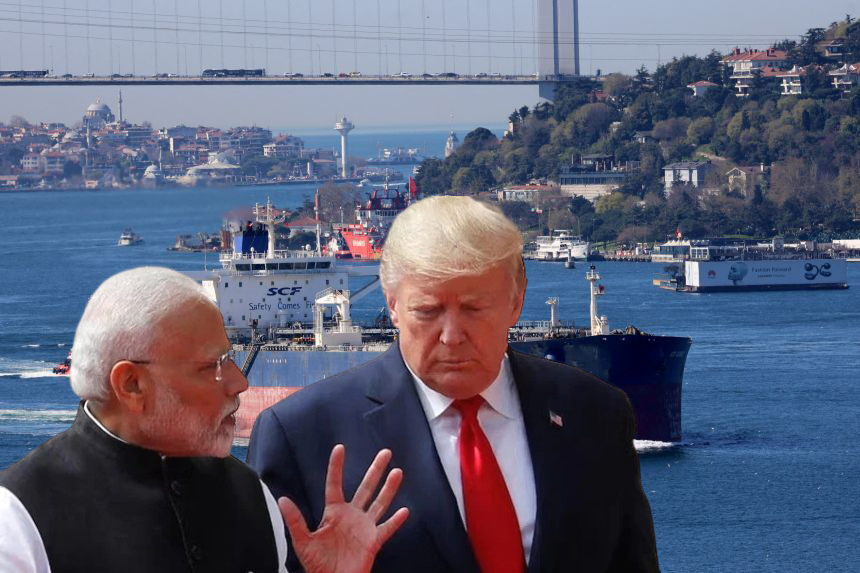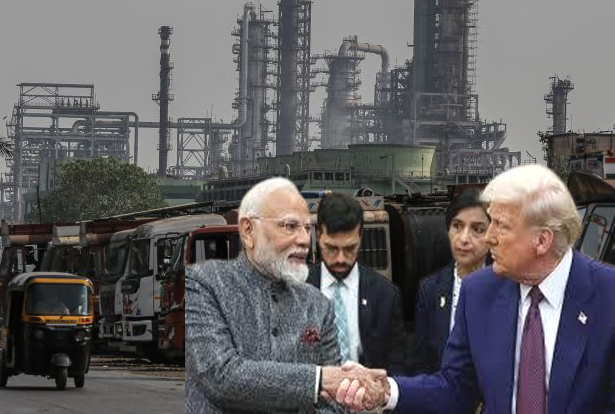New U.S. Tariffs on Russian Oil Threaten India’s Economic Gains from Discounted Imports
Fresh U.S. tariffs on Russian oil, effective Wednesday, are set to wipe out much of the financial advantage India has enjoyed from purchasing discounted Russian crude since the start of the Ukraine war.
Analysts estimate India has saved more than $17 billion by ramping up Russian oil imports since early 2022. However, the Biden administration’s move to impose additional tariffs of up to 50% on Indian exports could reduce shipments by over 40%, or nearly $37 billion, during the current.
Experts warn the economic impact could be long-lasting and politically challenging for Prime Minister.
Narendra Modi, especially as job losses loom in labor-intensive sectors like textiles, gems, and jewelry.
India’s reaction in the coming weeks could reshape its decades-long partnership with Russia and alter its increasingly complex relationship with the United States — ties Washington views as essential in countering China’s growing influence in the Indo-Pacific region.India depends on Russia for defense equipment, cost-effective oil, geopolitical backing, and support on critical diplomatic matters,
Happymon Jacob, founder of Delhi’s Council for Strategic and Defence Research, emphasized, “This positions Russia as a vital strategic partner that India cannot risk losing
India Balances U.S. Relations and Russian Oil Imports Amid Tariff and Energy Pressures
Despite recent tensions between New Delhi and Washington under President Trump, the United States remains India’s most critical strategic ally. “India cannot afford to choose one partner over the other — at least not yet,” one analyst noted.
Two senior Indian officials confirmed that New .
Delhi is working to restore ties with Washington and is open to expanding U.S. cooperation in trade and energy. trade and energy cooperation. energy imports but remains unwilling to completely halt Russian oil purchases.
India’s foreign secretary told reporters Tuesday that talks with the United States are ongoing, with both sides holding virtual discussions on trade, energy security — including nuclear cooperation — and critical minerals exploration.
Russian Oil Now 40% of India’s Imports
Before the Ukraine conflict, Russia contributed almost nothing to India’s oil import portfolio.Today, it accounts for roughly 40%, with analysts warning that an immediate halt would be economically unsustainable and seen as bowing to external pressure.
India’s oil purchases are led by Reliance Industries, owned by billionaire Mukesh Ambani, which operates the world’s largest refining facility in Gujarat, Prime Minister Narendra Modi’s home state.
According to internal government estimates obtained by Reuters, global crude oil .
prices could surge to $200 per barrel if India — the world’s third-largest oil consumer and importer — halted its purchases of Russian oil.. India would also lose discounts of up to 7% compared to global benchmarks that Russian crude currently provides.
India Accuses U.S. of Double StandardsIn an unusually sharp statement earlier this month, New Delhi accused Washington of hypocrisy for targeting India’s Russian oil imports while continuing its own purchases of Russian uranium hexafluoride, palladium, and fertilizer. India also noted that other countries, such as China,
Have increased Russian oil imports without facing similar penalties.
U.S. Treasury Secretary Scott Bessent has accused India of “profiteering” from its increased imports of Russian oil, calling the practice “unacceptable.”
In response, India’s foreign ministry defended the purchases, stating that crude imports from Russia are essential “to ensure predictable and affordable energy costs for Indian consumers” and are driven by current global market conditions.New Delhi has warned that halting Russian oil imports .
currently around two million barrels per day — would disrupt the country’s entire energy.
supply chain and sharply increase domestic fuel prices. Officials also noted that the previous U.S. administration under President Joe Biden supported India’s Russian oil imports to help maintain global price stability.
Russia, for its part, has said it expects India to continue buying its oil despite growing U.S. criticism.
Prime Minister Narendra Modi has not directly addressed the new U.S. tariffs but has repeatedly voiced strong support for India’s farmers — widely seen as a subtle rebuke to U.S. Farmers form a crucial voting bloc as Modi faces a challenging election in the rural state of Bihar later this year.
Additionally, Modi has pledged significant reductions in India’s goods and services tax by October to stimulate domestic demand and ease economic pressures.
India Navigates Global Diplomacy Amid U.S. Tariffs and Geopolitical Pressures
In recent days, senior Indian officials have traveled to Russia as part of a broader diplomatic push toward multipolarity, while Prime Minister Narendra Modi is scheduled to visit China this month — his first trip in over seven years. Relations between India and China began improving roughly a year ago following a deadly border clash in 2020.Prime Minister Modi is set to meet Chinese President Xi Jinping and Russian President.
Readmore Why India’s polling monitor Election Commission is facing a test of credibility 2025
Vladimir Putin at the upcoming Shanghai Cooperation .
Organisation (SCO) summit starting this Sunday. However, sources indicate that India remains cautious in its approach toward China and is not yet considering a trilateral summit with the three leaders, despite Russian hopes.
Experts note that other countries may closely watch India’s response to the recent U.S. tariffs. “The key takeaway for other nations is that if India — an emerging economic and military power — struggles under U.S.
Under such pressure, other nations might find it even harder to withstand comparable demands,” said analyst Happymon Jacob.
Some observers suggest that China could emerge as a potential counterbalance, particularly in light of former President Trump’s unpredictable and assertive geopolitical strategies.
International relations experts caution that former President Trump’s recent moves have pushed U.S.-India relations to potentially their weakest level since the 1998 sanctions imposed on India after its nuclear tests.
Beyond trade, tensions could affect work visas for Indian tech professionals and the offshoring of services.
Even if India succeeds in reversing some of the tariffs, long-term effects are expected, especially in trade. Competitors such as China, Vietnam, Mexico, Turkey, and even countries like Pakistan, Nepal, Guatemala, and Kenya could capitalize on India’s temporary exclusion, potentially locking it out of key markets Several consequences could persist even after the tariffs are removed,” said GTRI founder Ajay Srivastava, a former Indian trade official.


